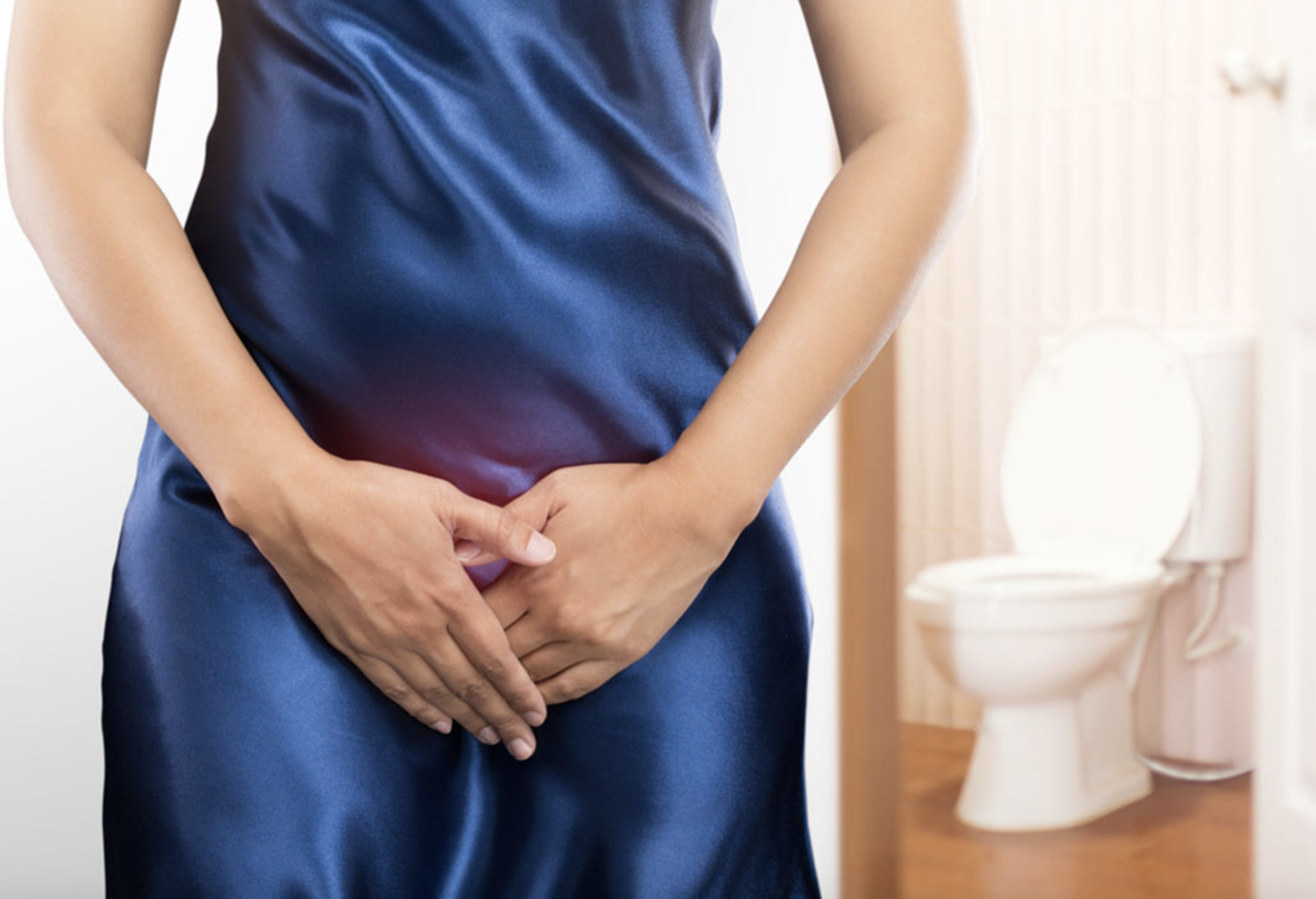
Urinary and/or Bowel Incontinence and Dysfunction
Urinary incontinence has gained attention over the years as more women have sought help for this problem. However, it is still common to hear women report that they continued to experience incontinence for many years after giving birth and simply did not realize it was a treatable condition. According to a study just published in 2020, “the strongest risk factor for incontinence later in life was incontinence during pregnancy.” (1)
To give you an idea of how many women experience this, a different study estimates that 54% of women experience urinary incontinence or urgency while pregnant and during postpartum with reduced quality of life due to its impact on everyday life. (2) This is a global, prevalent problem for women, and we are here to help. Bowel incontinence is also more common than most women realize, but it is underreported despite the impact it can have on quality of life. Bowel, or fecal incontinence, may occur during pregnancy and even postpartum. The incidence of bowel incontinence postpartum increases when a mother experiences anal tearing and/or an episiotomy. (3)
Symptoms/Functional problems
Stress urinary incontinence is leakage with sneezing, coughing, jumping and running. Urgency urinary incontinence is having sudden urges to pee frequently and sometimes not making it to the bathroom in time. This can be caused by certain stimulus, such as running water. Bowel leakage can happen without the urge for a bowel movement.
Causes
Pregnant women in their third trimester are particularly susceptible to urinary incontinence due to the position and weight of the baby pressing on their bladder. These women experience frequent and urgent sensations to urinate, and they may experience leakage before making it to the bathroom. Similarly, being pregnant increases the likelihood of experiencing bowel leakage from the pressure on the pelvic floor. After giving birth, there may be damage to the sensitive tissues around or within the rectum, such as when an episiotomy or tearing occurs, that may lead to a higher risk of bowel leakage/incontinence after childbirth. (4)
Menopausal women may also experience urinary incontinence due to reduced levels of estrogen that cause the lining of the urethra to become thinner. (5) Pelvic floor muscles may also weaken with age. “Urinary incontinence (UI) is an important social problem that affects more than 50% of postmenopausal women.” (6)
FAQ
Q: Is urinary and/or bowel incontinence treatable?
A: Yes. An evaluation by a pelvic floor physical therapist can help determine how best to treat your incontinence. One study that evaluated pregnant mothers and postpartum mothers indicates pelvic floor muscle training can prevent and reverse both urinary and bowel incontinence. (7)
Q: Is urinary incontinence common?
A: Yes. Statistics vary, but one study describes at least one-third of women have urinary incontinence after childbirth. 8 50% of menopausal women also experience urinary incontinence. (8)
Q: Is bowel incontinence common?
A: Yes. Statistics vary due to underreporting, but one study describes up to one-tenth of women have fecal incontinence after childbirth. (9)
Q: Would I benefit from pelvic floor physical therapy (PFPT)?
A: If you are a pregnant or postpartum mother and experiencing any of the symptoms described here, you may benefit from PFPT. This specialized therapy is useful in treating urinary and bowel incontinence.
Treating and Managing Your Urinary and/or Bowel Incontinence
The research support is growing for PFPT, demonstrating that prenatal and postpartum women experience less incontinence and, most importantly, an improved quality of life. (10) Another study followed women over 12 weekly sessions and determined that those who received pelvic floor muscle training under the guidance of a physical therapist experienced less urinary incontinence and improved strength and endurance. (11)
At N-Balance Physical Therapy, we offer a comprehensive treatment plan that includes a thorough evaluation to identify the cause of the problems you are experiencing and implement an individualized treatment plan to improve your symptoms, quality of life and enjoyment of your pregnancy and, soon, new baby.
References
- Hage‐Fransen, M. A. H., Wiezer, M., Otto, A., Wieffer‐Platvoet, M. S., Slotman, M. H., Nijhuis‐van der Sanden, M. W. G., & Pool‐Goudzwaard, A. L. (2020). Pregnancy‐ and obstetric‐related risk factors for urinary incontinence, fecal incontinence, or pelvic organ prolapse later in life: A systematic review and meta‐analysis. Acta Obstetricia et Gynecologica Scandinavica, 100(3), 373–382. https://doi.org/10.1111/aogs.14027
- Sangsawang, B., & Sangsawang, N. (2013). Stress urinary incontinence in pregnant women: a review of prevalence, pathophysiology, and treatment. International Urogynecology Journal, 24(6), 901–912. https://doi.org/10.1007/s00192-013-2061-7
- Woodley, S. J., Boyle, R., Cody, J. D., Mørkved, S., & Hay-Smith, E. J. C. (2017). Pelvic floor muscle training for prevention and treatment of urinary and faecal
incontinence in antenatal and postnatal women. Cochrane Database of Systematic Reviews. Published. https://doi.org/10.1002/14651858.cd007471.pub3 - LaCross, A., Groff, M., & Smaldone, A. (2015). Obstetric Anal Sphincter Injury and Anal Incontinence Following Vaginal Birth: A Systematic Review and Meta-Analysis. Journal of Midwifery & Women’s Health, 60(1), 37–47. https://doi.org/10.1111/jmwh.12283
- Urinary Incontinence. Urinary Incontinence, Sexual Side Effects of Menopause | The North American Menopause Society, NAMS. (n.d.).
https://www.menopause.org/for-women/sexual-health-menopause-online/causes-of-sexual-problems/urinary-incontinence. - Kołodyńska, G., Zalewski, M., & Rożek-Piechura, K. (2019). Urinary incontinence in postmenopausal women – causes, symptoms, treatment. Przeglad
menopauzalny = Menopause review, 18(1), 46–50. https://doi.org/10.5114/pm.2019.84157 - Park, S. H., Kang, C. B., Jang, S. Y., & Kim, B. Y. (2013). Effect of Kegel
Exercise to Prevent Urinary and Fecal Incontinence in Antenatal and Postnatal Women: Systematic Review. Journal of Korean Academy of Nursing, 43(3), 420. https://doi.org/10.4040/jkan.2013.43.3.420 - See note 3 above
- See note 3 above
- Kahyaoglu Sut, H., & Balkanli Kaplan, P. (2015). Effect of pelvic floor muscle exercise on pelvic floor muscle activity and voiding functions during pregnancy
and the postpartum period. Neurourology and Urodynamics, 35(3), 417–422. https://doi.org/10.1002/nau.22728 - Sigurdardottir, T., Steingrimsdottir, T., Geirsson, R. T., Halldorsson, T. I., Aspelund, T., & Bø, K. (2020). Can postpartum pelvic floor muscle training reduce
urinary and anal incontinence?: An assessor-blinded randomized controlled trial. American journal of obstetrics and gynecology, 222(3), 247.e1–247.e8.
https://doi.org/10.1016/j.ajog.2019.09.011